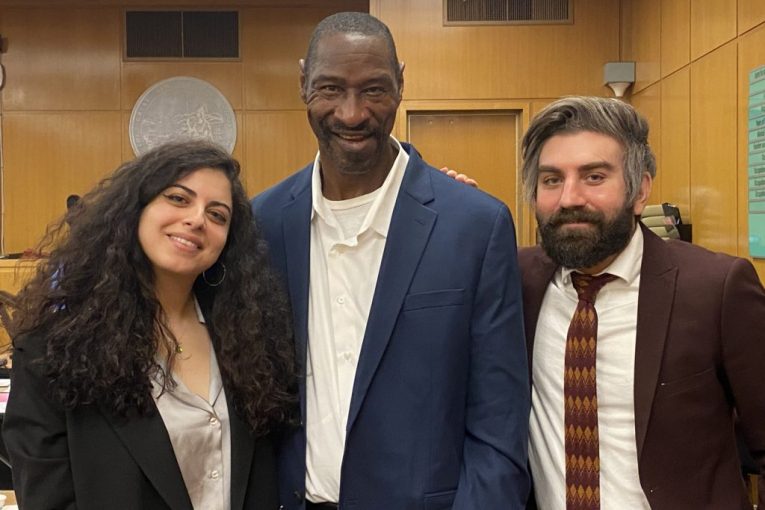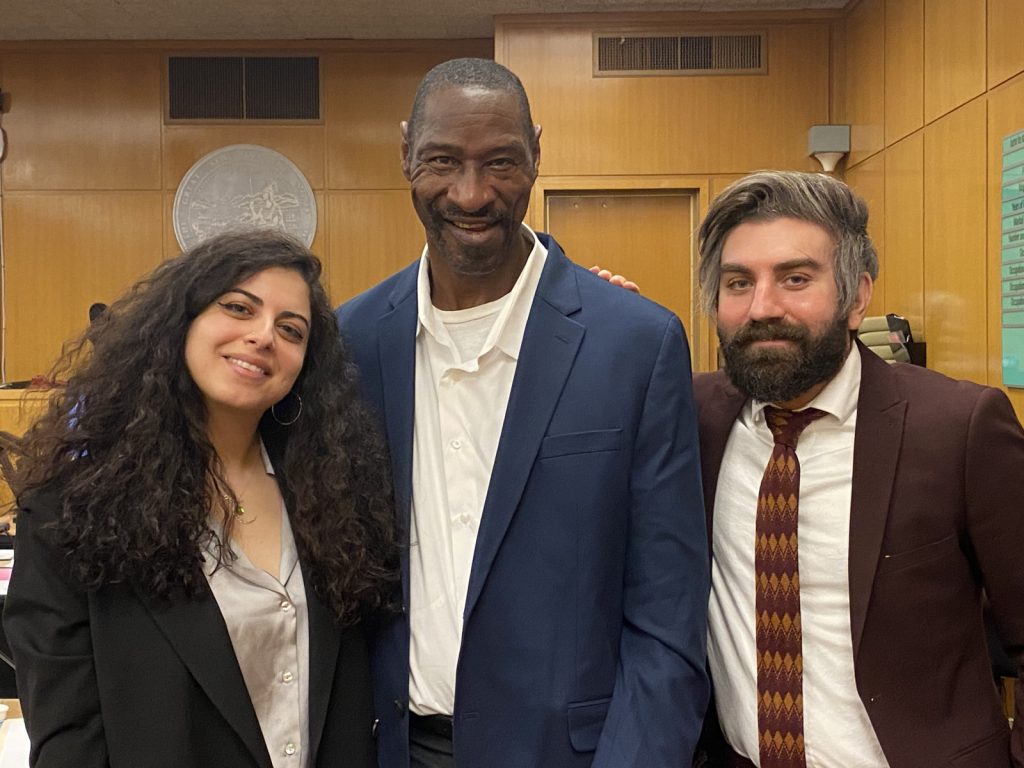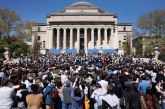

By David M. Greenwald
Executive Editor
San Francisco, CA – In September, San Francisco judges denied a motion to dismiss, then denied a motion to suppress and only threw out two charges against a man shot by SF police, despite the fact that the judge acknowledging it was a “terrible outcome.”
Now as the trial began this week against Richard Everett, who was shot multiple times by police on August 28, prosecutors dismissed the case as a police officer refused to testify, pleading the Fifth.
That forced prosecutors to cite lack of evidence a day after opening statements and initial evidence were presented in the trial.
Deputy Public Defenders Nuha Abusamra and Anthony Gedeon represented Everett, who was  exhibiting signs of a mental health crisis on Aug. 28, did not injure anyone, and was not told he was under arrest before police shot him for trying to walk away.
exhibiting signs of a mental health crisis on Aug. 28, did not injure anyone, and was not told he was under arrest before police shot him for trying to walk away.
Despite this, the DA’s office charged Everett with resisting arrest, threatening an officer, and carrying a knife.
The DA’s office also asked a judge to keep the jury from hearing evidence about the fact that police shot Everett, but the judge did not grant that request.
“Today’s dismissal illustrates why Mr. Everett should have never been charged and incarcerated since August of 2023,” said Abusamra. “The dismissal today is the right result, but we should question why it took so long to get here.”
On August 28, San Francisco Police Officers shot the 54-year-old Richard Everett, after being dispatched to the scene regarding a man with a knife in the Tenderloin neighborhood.
Everett was taken to San Francisco General Hospital and placed under arrest. He has been jailed since August, with intermittent hospital visits to attend to the severe injuries he suffered from the five gunshot wounds he sustained, including to his lung and right hand.
After the SFPD held a town hall several days after the shooting and released footage from officers’ body-worn cameras, Abusamra commented: “The footage of the police shooting Mr. Everett is gruesome. When the police closed off the 300 block of Jones Street and surrounded Mr. Everett, they were not in danger. Police spent roughly 15 minutes giving him conflicting commands, both asking him to drop the knife and then telling him he could keep it. When Mr. Everett tried to slowly walk away while holding a milk crate in one hand and his duffel bag in the other, police opened fire with both less-lethal and lethal rounds in quick succession. That is not de-escalation. That is an attempt to execute him.”
“We’ve seen time and again that police too often resort to violence when interacting with vulnerable individuals like Mr. Everett. This is why San Francisco needs alternatives to policing to better attend to community safety,” said Brian Cox, Director of the Public Defender’s Office Integrity Unit.
During the preliminary hearing, Judge McNaughton acknowledged he was troubled by the result, but wasn’t going to rule on whether the police used excessive force. That would be a question for another day and a different proceeding.
While the judge did not weigh in on whether the force was excessive, he did acknowledge that the outcome was terrible.
In a phone interview with the Vanguard in September, Abusamra explained that the police received a call about a man in the Tenderloin who was in possession of a knife.
“Mr. Everett was, in fact in what I would describe as a crisis situation,” she said. “The officers themselves stated that they wanted to take him to a hospital, not a jail, a hospital. And they spoke to one of his friends and his friend tried to speak with Mr. Everett.”
One of Everett’s friends described his condition as “a little bit loosey goosey.”
During the hearing, Abusamra alleged the police failed to deescalate situation and they gave contradictory commands.
“Conflicting commands and commands that were confusing also, when officers are saying we want to help you, but you can see on the body-worn camera multiple literally holding shotguns towards Mr. Everett, pointing at his face, that’s clearly not going to help him feel in any way safe or in no way does that deescalate the situation,” she explained.
In addition, she said that the body worn camera footage shows that Everett never advanced towards the police, but instead “tried to slowly walk away, not towards the officers, away on the sidewalk.”
The police at this point opened fire with both lethal and non-lethal weapons.
“It was almost simultaneous,” she described. “I’m pretty sure in the town hall they also described that they said first we fired the beanbag and then two officers opened fire with their firearms. But if you see the video, you can see how fast all of that happened. So it didn’t appear like there was any real time lapse between beanbag rounds and I guess whatever you’d call live (ammunition).”
The footage does not show Everett either lunging toward or advancing toward the officers when he is shot.
“They closed the block, they encircled him, they’re on the street, he’s on the sidewalk,” she describes. “After 15 minutes of a back and forth, he picks up the stuff … the milk crate in one hand, a duffle bag in the other, and he’s walking away on the sidewalk.”
At this point, he’s encircled by the police. He’s 10 to 20 feet away when the shooting begins.
The conflicting commands only added to the confusion.
“They were trying to say, put down the knife, we need to talk to you,. We want to get you help, but you got to put down the knife,” she explained. But then she explained, “They’re like, it’s okay if we take you to the hospital you can keep your knife.”
She added, “It was very clearly confusing.”






